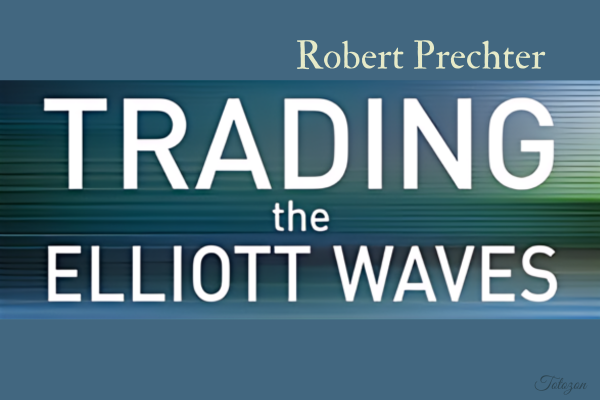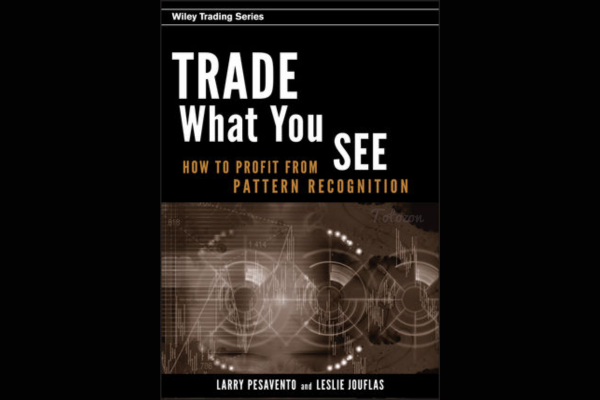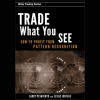-
×
 Trend Trading Techniques with Rob Hoffman
1 × $6.00
Trend Trading Techniques with Rob Hoffman
1 × $6.00 -
×
 Trading The Nasdaq Seminar with Alan Rich
1 × $6.00
Trading The Nasdaq Seminar with Alan Rich
1 × $6.00 -
×
 W. D Gann 's Square Of 9 Applied To Modern Markets with Sean Avidar - Hexatrade350
1 × $23.00
W. D Gann 's Square Of 9 Applied To Modern Markets with Sean Avidar - Hexatrade350
1 × $23.00 -
×
 Trend Trading My Way with Markay Latimer
1 × $15.00
Trend Trading My Way with Markay Latimer
1 × $15.00 -
×
 ICT Prodigy Trading Course – $650K in Payouts with Alex Solignani
1 × $15.00
ICT Prodigy Trading Course – $650K in Payouts with Alex Solignani
1 × $15.00 -
×
 Triple Your Trading Profits Couse with David Jenyns
1 × $6.00
Triple Your Trading Profits Couse with David Jenyns
1 × $6.00 -
×
 Trading the Elliott Waves with Robert Prechter
1 × $15.00
Trading the Elliott Waves with Robert Prechter
1 × $15.00 -
×
 AI For Traders with Trading Markets
1 × $31.00
AI For Traders with Trading Markets
1 × $31.00 -
×
 Bond Market Course with The Macro Compass
1 × $15.00
Bond Market Course with The Macro Compass
1 × $15.00 -
×
 Trading the Fast Moves for Maximum Profit with William McLaren
1 × $4.00
Trading the Fast Moves for Maximum Profit with William McLaren
1 × $4.00 -
×
 Compass Trading System with Right Line Trading
1 × $39.00
Compass Trading System with Right Line Trading
1 × $39.00
Trade What You See, Not What You Believe with Larry Pesavento
$6.00
File Size: Coming soon!
Delivery Time: 1–12 hours
Media Type: Online Course
Content Proof: Watch Here!
You may check content proof of “Trade What You See, Not What You Believe with Larry Pesavento” below:

Trade What You See, Not What You Believe with Larry Pesavento
Introduction
In the realm of trading, emotions and beliefs can often cloud judgment and lead to poor decisions. Larry Pesavento, a veteran trader and technical analyst, advocates for a disciplined approach: “Trade what you see, not what you believe.” This mantra emphasizes the importance of objective analysis over subjective beliefs. In this article, we will explore Pesavento’s trading philosophy, strategies, and how you can apply these principles to improve your trading performance.
Understanding the Philosophy
What Does “Trade What You See” Mean?
“Trade what you see” means making trading decisions based on objective data and observable market patterns rather than personal opinions or emotional biases.
Why is This Philosophy Important?
- Reduces Emotional Bias: Helps traders avoid decisions driven by fear or greed.
- Enhances Objectivity: Encourages reliance on factual data.
- Improves Consistency: Leads to more disciplined and systematic trading.
Larry Pesavento: A Brief Overview
Who is Larry Pesavento?
Larry Pesavento is a seasoned trader with decades of experience. Known for his expertise in pattern recognition and technical analysis, he has authored several books and developed various trading strategies.
Pesavento’s Approach to Trading
Pesavento combines technical analysis with a disciplined mindset to create robust trading strategies. He emphasizes the importance of staying objective and not letting personal beliefs influence trading decisions.
Key Concepts in Pesavento’s Trading Philosophy
1. Technical Analysis
What is Technical Analysis?
Technical analysis involves studying price charts and patterns to forecast future market movements. It relies on historical price data and volume to make predictions.
Why Use Technical Analysis?
- Predict Market Trends: Identifies potential future price movements.
- Support and Resistance Levels: Helps determine entry and exit points.
- Pattern Recognition: Recognizes recurring patterns that indicate market behavior.
2. Pattern Recognition
Understanding Pattern Recognition
Pattern recognition involves identifying specific formations in price charts that suggest future market directions. Pesavento is renowned for his skill in recognizing and trading these patterns.
Common Patterns
- Gartley Pattern
- ABCD Pattern
- Head and Shoulders Pattern
3. Fibonacci Ratios
What are Fibonacci Ratios?
Fibonacci ratios are mathematical ratios used to identify potential reversal levels in financial markets. They are derived from the Fibonacci sequence.
Using Fibonacci Ratios in Trading
- Retracement Levels: Identify potential support and resistance levels.
- Extension Levels: Predict future price targets.
Applying Pesavento’s Philosophy in Your Trading
1. Analyzing Price Charts
Regularly analyze price charts to identify patterns and trends. Use tools like candlestick charts and bar charts for comprehensive analysis.
2. Utilizing Technical Indicators
Incorporate technical indicators such as Moving Averages, Relative Strength Index (RSI), and MACD to confirm pattern formations and enhance trading decisions.
3. Avoiding Emotional Trading
Stick to your trading plan and avoid making decisions based on emotions. Use objective data to guide your trades.
4. Setting Clear Entry and Exit Points
Define your entry and exit points based on technical analysis. This helps in making informed decisions and managing risk effectively.
Developing a Trading Strategy Based on Pesavento’s Principles
Step 1: Define Your Goals
Identify what you want to achieve with your trading. Are you looking for steady income, capital growth, or both?
Step 2: Conduct Thorough Analysis
Use technical analysis and pattern recognition to analyze market conditions and identify trading opportunities.
Step 3: Create a Trading Plan
Develop a detailed trading plan that outlines your entry and exit criteria, risk management rules, and performance evaluation metrics.
Step 4: Stay Disciplined
Stick to your trading plan and avoid making impulsive decisions based on emotions.
Common Mistakes to Avoid
1. Overtrading
Trading too frequently can lead to losses. Focus on quality trades rather than quantity.
2. Ignoring Risk Management
Always prioritize risk management. Set stop-loss orders and never risk more than you can afford to lose.
3. Letting Emotions Drive Decisions
Avoid letting fear or greed influence your trading decisions. Stay objective and disciplined.
Tools and Resources for Successful Trading
1. Charting Software
Invest in reliable charting software that offers advanced pattern recognition tools and features.
2. Educational Resources
Read books, take online courses, and attend seminars by experts like Larry Pesavento to deepen your knowledge.
3. Trading Communities
Join trading forums and communities to share insights and learn from other experienced traders.
Conclusion
Trading what you see, not what you believe, is a powerful principle that can significantly enhance your trading performance. Larry Pesavento’s approach to combining technical analysis with a disciplined mindset provides a robust framework for traders. By staying objective, avoiding emotional biases, and using proven strategies, you can improve your chances of success in the financial markets.

Frequently Asked Questions:
- Business Model Innovation:
Embrace our legitimate business model! We organize group buys, allowing participants to share costs for popular courses, making them accessible to those with limited financial resources. Our approach ensures affordability and accessibility, despite author concerns. - The Legal Environment:
The legality of our activity is uncertain. While we lack specific permission from course authors, there’s a technicality: authors didn’t impose resale limits upon course purchase. This presents both an opportunity for us and a benefit for individuals seeking low-cost access. - Quality Control:
Unveiling the Truth
Quality is paramount. Purchasing courses directly from sales pages ensures consistency with traditionally obtained materials. However, we’re not official course providers and don’t offer premium services:
- No scheduled coaching calls or sessions with the author.
- No access to the author’s private Facebook group or web portal.
- No entry to the author’s private membership forum.
- Direct email support from the author or their team is unavailable. Operating independently, we aim to bridge the pricing gap without additional services provided by official channels. Your understanding of our unique approach is valued.
Be the first to review “Trade What You See, Not What You Believe with Larry Pesavento” Cancel reply
You must be logged in to post a review.
Related products
Forex Trading
Forex Trading
Forex Trading
Forex Trading
Forex Trading
Forex Trading
Forex Trading
Forex Trading
Forex Trading
Quantamentals – The Next Great Forefront Of Trading and Investing with Trading Markets
Forex Trading
The Complete Guide to Multiple Time Frame Analysis & Reading Price Action with Aiman Almansoori
Forex Trading
Forex Trading



















Reviews
There are no reviews yet.